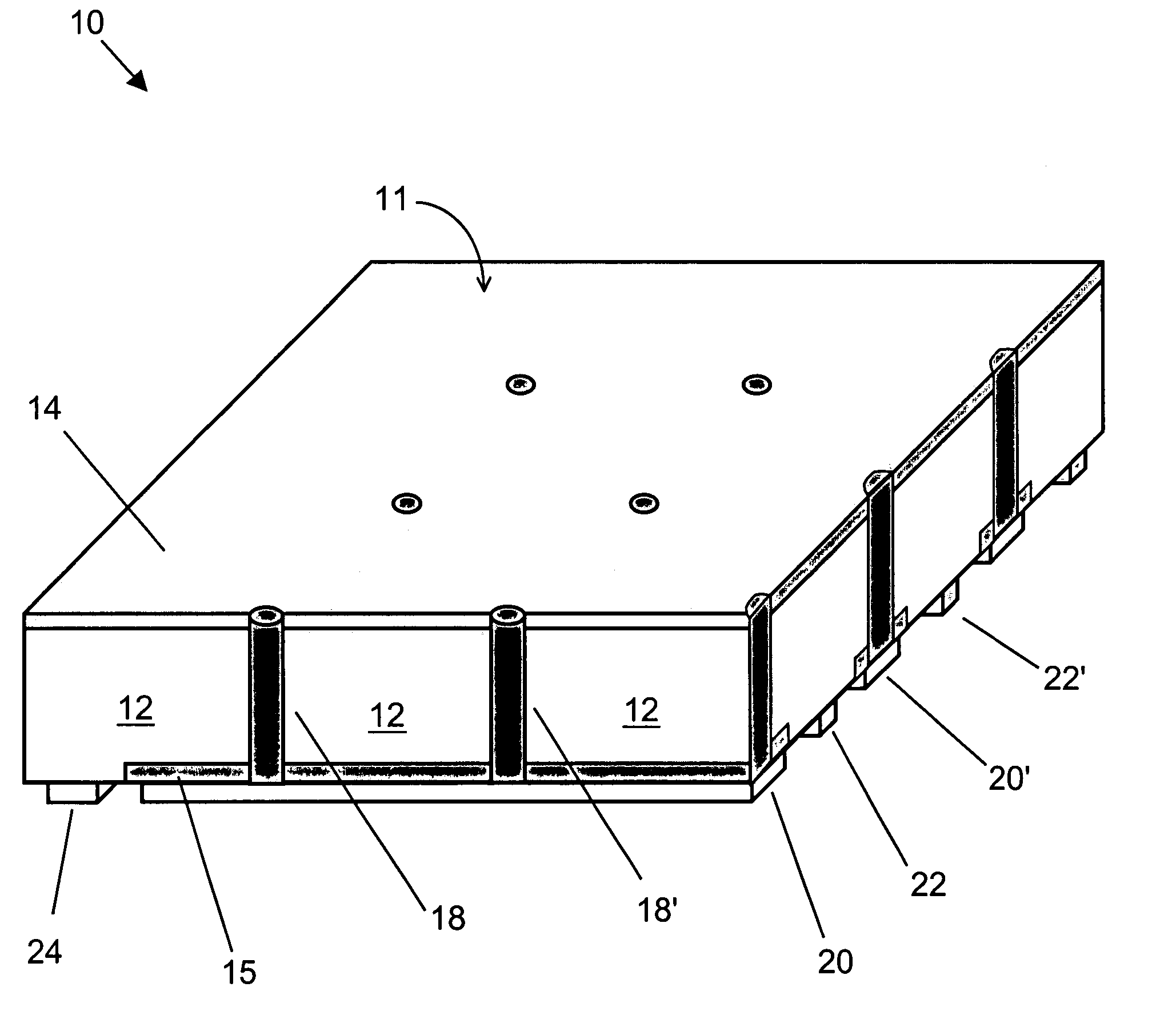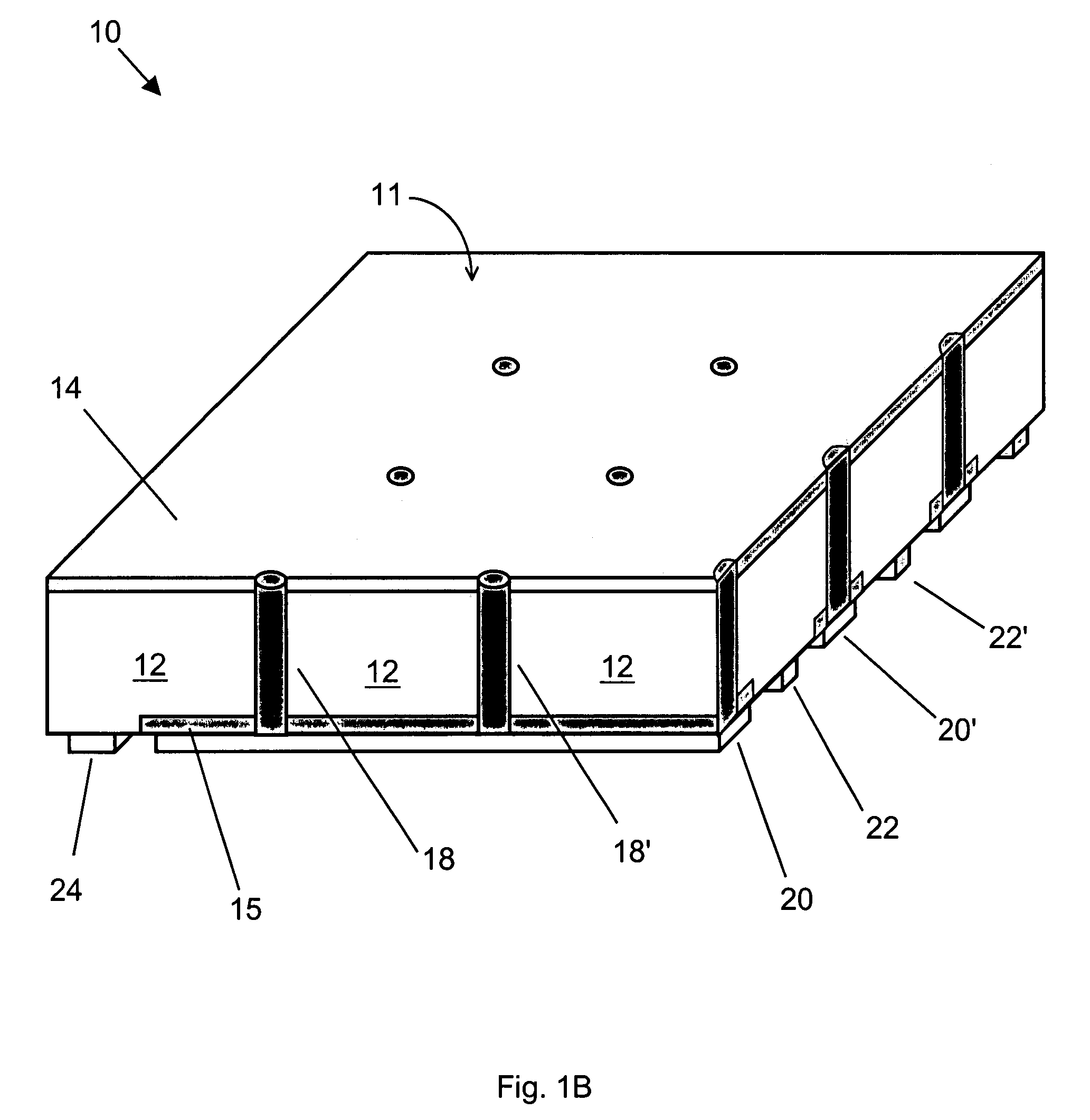Fabrication of back-contacted silicon solar cells using thermomigration to create conductive vias
a back-contact silicon and solar cell technology, applied in semiconductor/solid-state device manufacturing, electrical equipment, semiconductor devices, etc., can solve the problems of limited conductivity of laser-drilled vias, limited internal collection depth of photo-generated carriers, and added cost and manufacturing time of laser-drilling steps
- Summary
- Abstract
- Description
- Claims
- Application Information
AI Technical Summary
Benefits of technology
Problems solved by technology
Method used
Image
Examples
Embodiment Construction
[0026]Note that in the drawings, the thicknesses of the various layers of insulating, semiconducting, and metallic materials; and other dimensions, such as the width of contact pads, are not drawn to scale, but, rather, are shown schematically for purposes of illustration and easy identification.
[0027]FIG. 1A shows a schematic cross-section side view of a first example of a back-contacted silicon solar cell, according to the present invention. Back-contacted solar cell 10 comprises a p-type bulk silicon substrate 12; a front side n+ diffusion emitter layer 14 located on the front side 11 of substrate 12; a backside n+ diffusion emitter layer 15 located on the backside 13 of substrate 12; a n-gridline negative ohmic contact 20 located on the backside 13 of substrate 12, contacting backside emitter layer 15; a n++ conductive via 18 disposed through the thickness of substrate 12 that electrically connects front side emitter layer 14 to negative ohmic contact 20 located on backside 13 a...
PUM
 Login to View More
Login to View More Abstract
Description
Claims
Application Information
 Login to View More
Login to View More - R&D
- Intellectual Property
- Life Sciences
- Materials
- Tech Scout
- Unparalleled Data Quality
- Higher Quality Content
- 60% Fewer Hallucinations
Browse by: Latest US Patents, China's latest patents, Technical Efficacy Thesaurus, Application Domain, Technology Topic, Popular Technical Reports.
© 2025 PatSnap. All rights reserved.Legal|Privacy policy|Modern Slavery Act Transparency Statement|Sitemap|About US| Contact US: help@patsnap.com



